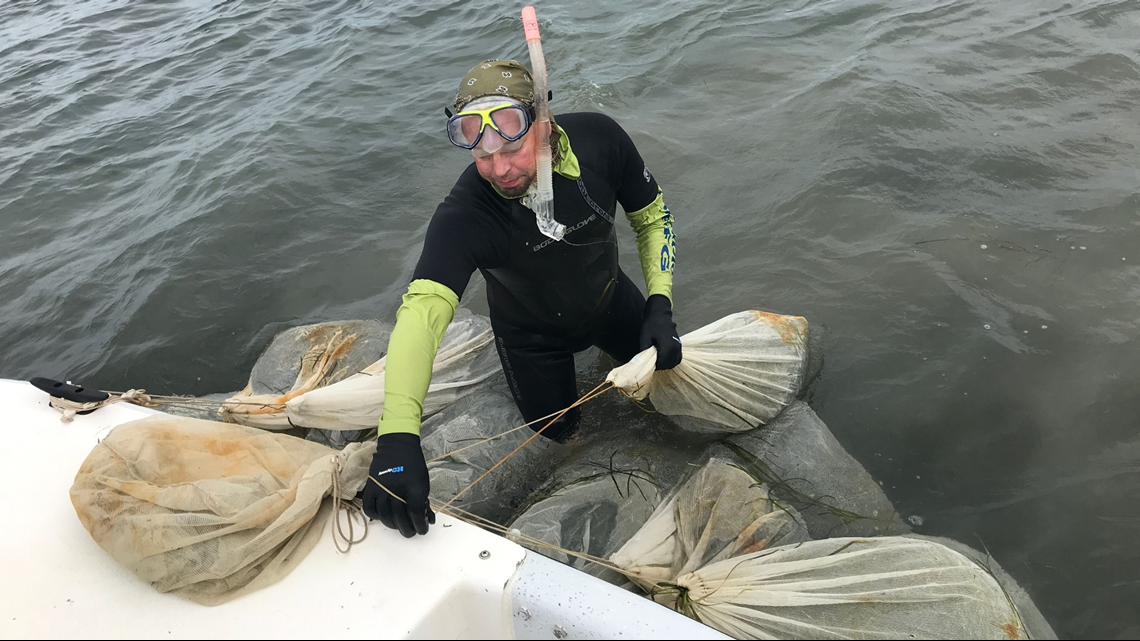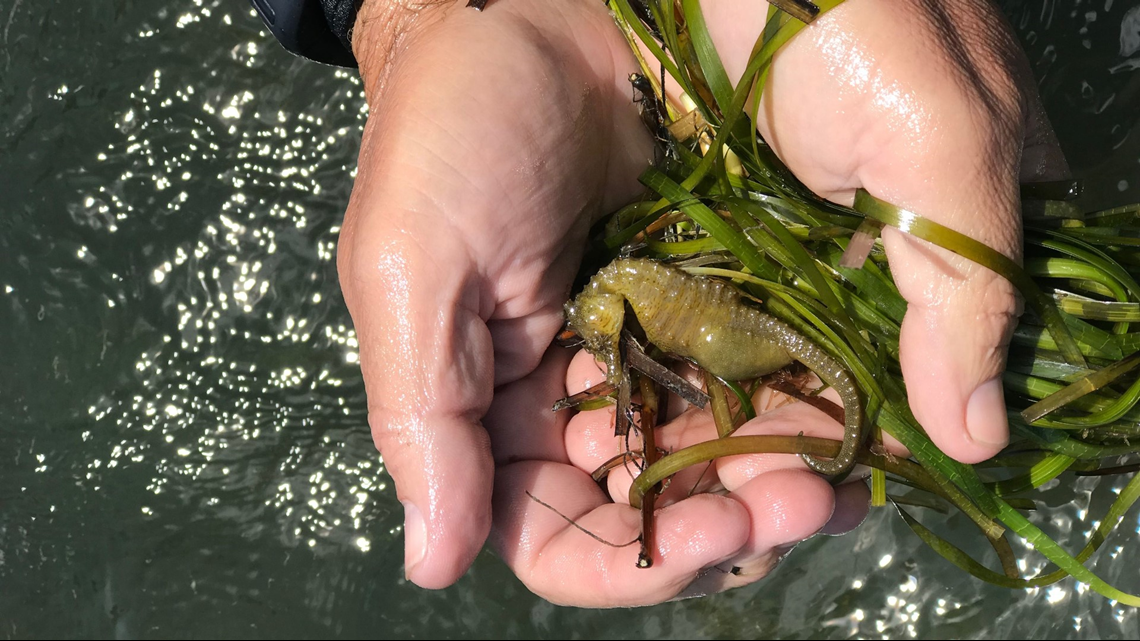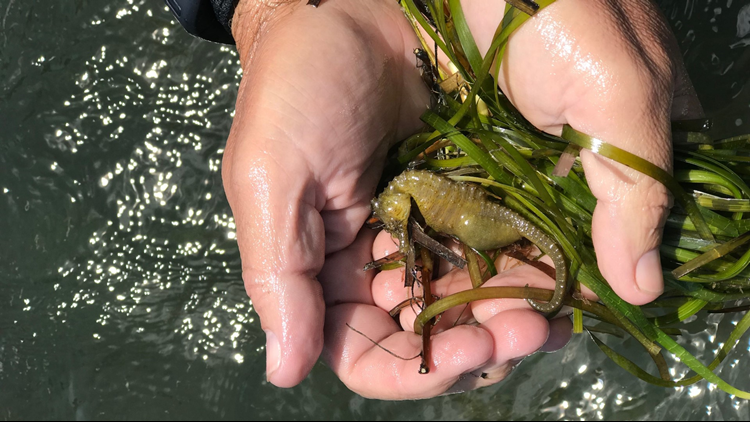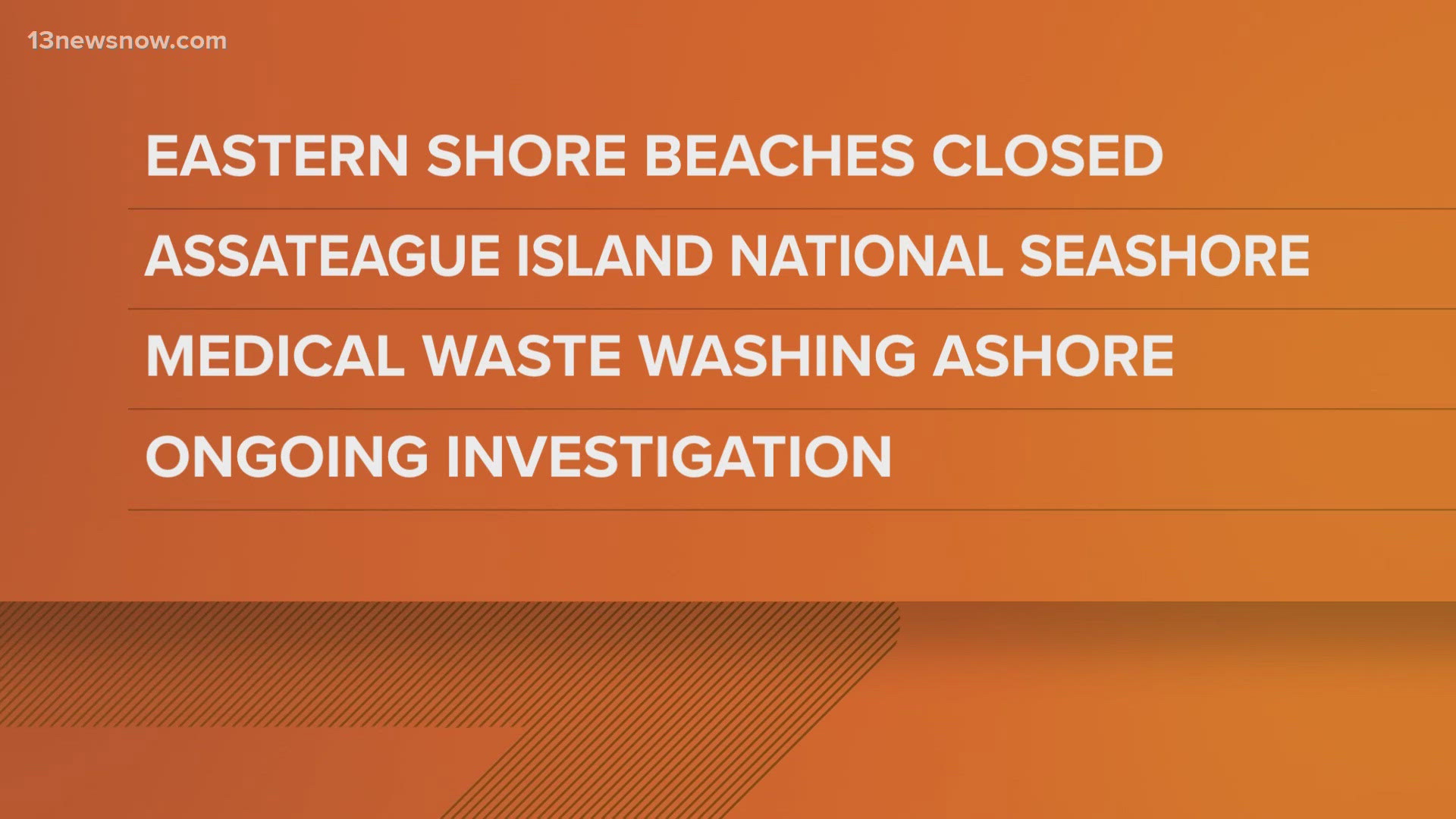OYSTER, Va. (Delmarva Now) -- Each spring when the tides and emergence of a special seed converge, volunteers gather on the docks in Oyster.
Donning wetsuits and snorkels, they boat to a shallow site in South Bay, where they gather seeds from a vital plant absent from Virginia’s seaside for decades.
With their help, The Nature Conservancy, Virginia Institute of Marine Science and University of Virginia’s Eastern Shore laboratory have spread more than 70 million eelgrass seeds into the Shore’s coastal bays since the project launched in the early 2000s.
The 500-plus acres they planted have spread, covering nearly 7,200 acres in South, Spider Crab, Hog Island and Cobb Island bays in vast, underwater meadows.
“Now, when you put your face underwater, all you see is eelgrass,” said Bo Lusk, a coastal scientist at TNC’s Virginia Coast Reserve.
It is the world’s largest successful seagrass restoration project and is providing a model for what can happen when water quality is restored.
Vital habitat
Seagrass serves as the infrastructure for tiny communities of crabs, fish, seahorses, shellfish and the larger sportfish that feed on them. It also served as the foundation for the once-lucrative bay scallop fishery, which local scientists are working to restore.
But the vast underwater meadows do more than support marine life — they also dampen waves and protect nearby shores.
“It’s helping with the coastline because it takes some of the energy out of waves that are rolling across here,” Lusk said, pointing across South Bay.
“Like rolling a ball across a shag carpet, it takes a lot more force to get across that,” he said. “It’s the same thing with waves rolling all the way across this bay toward that marsh.”
As waves pass through the grass, sediment settles out of the water column, keeping it out of boating channels and off hard surfaces oysters need to settle and grow. It also helps keep the water clear so light can reach the plants.
But the rebounding species was not always present in South Bay.
Eelgrass was hit hard in the 1930s by a slime mold that weakened and killed many of the plants. A powerful 1933 hurricane decimated remaining beds, leaving Virginia’s coastal bays without a surviving seed source for years.


"That storm was really the nail in the coffin that did in our eelgrass,” Lusk said.
But in the 1990s, a small patch of emerald shoots appeared in a seaside bay.
At the same time, VIMS professor Robert Orth was developing a revolutionary method for reviving the species.
Previous efforts to restore eelgrass involved the labor-intensive process of planting shoots by hand. Progress was dubious until Orth developed a new technique that required only eelgrass seeds.
To spread the plant, workers simply scatter seeds from the bow of a boat each fall, when they are ready to germinate.
In 2008, volunteers joined forces with The Nature Conservancy, redoubling their efforts to collect and spread seeds.
Many hands
During a narrow window each spring when the tides, daylight and plants’ fertility align, volunteers travel from as far as Washington, D.C., and West Virginia to Oyster’s offshore site.
Dipping and dunking in shallows of South Bay, they collected millions of seeds attached to fertile shoots over the weeklong window in late May this year.
“It’s amazing to hear the story that there was a disease — a blight — and a hurricane that wiped out nearly all the seagrass. To hear that there’s thousands and thousands of acres now is really incredible,” said volunteer Carrie Dellesky, from Washington, D.C.
“We think it’s really important for us to get out here and actually help out,” said Britt Sorensen, a return volunteer from the Virginia Living Museum, in Newport News. “Stuff like this isn’t just for people who are in the biology field or the environmental field. Anyone can come out and help, and it’s really important to.”
“It grounds you and gets you familiar with the things that are in your area, and that tends to make people care a little bit more about them,” Sorensen said.
“I use the barrier islands all the time,” said Tim Kraczel, a Cape Charles resident and volunteer with the project. “There’s a whole food chain and web of life and ecosystem out there … There are so many stressors to the ecosystem. This is actually doing something to help.”
Returning from their day's work, volunteers dumped trashcans full of fertile shoots into circulating tanks of water in Oyster.


TNC workers will later separate the seeds from shoots in the tanks in a routine not unlike the grape stomping used to make traditional wine.
In the fall, just before eelgrass naturally germinates, they will spread the seeds by hand from the bow of a boat, likely targeting Cobb Bay, Lusk said.
Restoration in Virginia’s coastal bays is roughly 70 percent complete, he said, with eelgrass spanning from the southern end of South Bay north to Hog Island Bay.
“If we quit right now, it’s going to keep spreading on its own,” Lusk said. “We’re just speeding the process up.”
‘Poster child’ for water quality
Virginia’s seaside is blessed by clean waters, thanks to ocean inlets that feed clear water into the coastal bays, the absence of rivers that carry pollution or excess nutrients downstream, and conservation efforts on the barrier islands and seaside that help buffer the watershed, Lusk said.
“The reason we’ve been able to have the largest successful seagrass restoration project in the world here is because of that water quality,” he said. “We’re sort of the poster child for that here.”
That isn’t the case in many other areas, however, where issues with sediments and water quality hinder efforts to restore seagrass — but a new story is showing that human actions make a difference.
On Virginia’s bayside, seagrass is slowly returning, following the establishment of the Chesapeake Bay Program in 1983 and its efforts to curb nutrients and pollution entering the bay.


“There’s a correlation with the slow return of underwater grasses to the Chesapeake Bay since the 1980s … (and) efforts that humans have made to protect and restore water quality in the bay,” Lusk said.
With less nitrogen and phosphorus feeding algae blooms, which cloud the water and deprive seagrass of sunlight, the species is starting to rebound.
“It’s not surprising news, based on what we’ve learned from here,” Lusk said. “It’s because of humans — because of humans doing the right thing to protect water quality.”
Aside from clean water, he said the most important piece of restoration work has been the volunteers who contribute hundreds of man hours to collecting eelgrass shoots each spring.
“Our volunteer force has just been huge. By the end of this year, we will have had probably over 600 volunteers helping with this” over the lifespan of the project, Lusk said.
“There’s absolutely no way we could’ve been this successful without having these volunteers come to do this work,” he said.
Visit https://bit.ly/2JqhRf2 to learn more about The Nature Conservancy’s seagrass restoration project.


